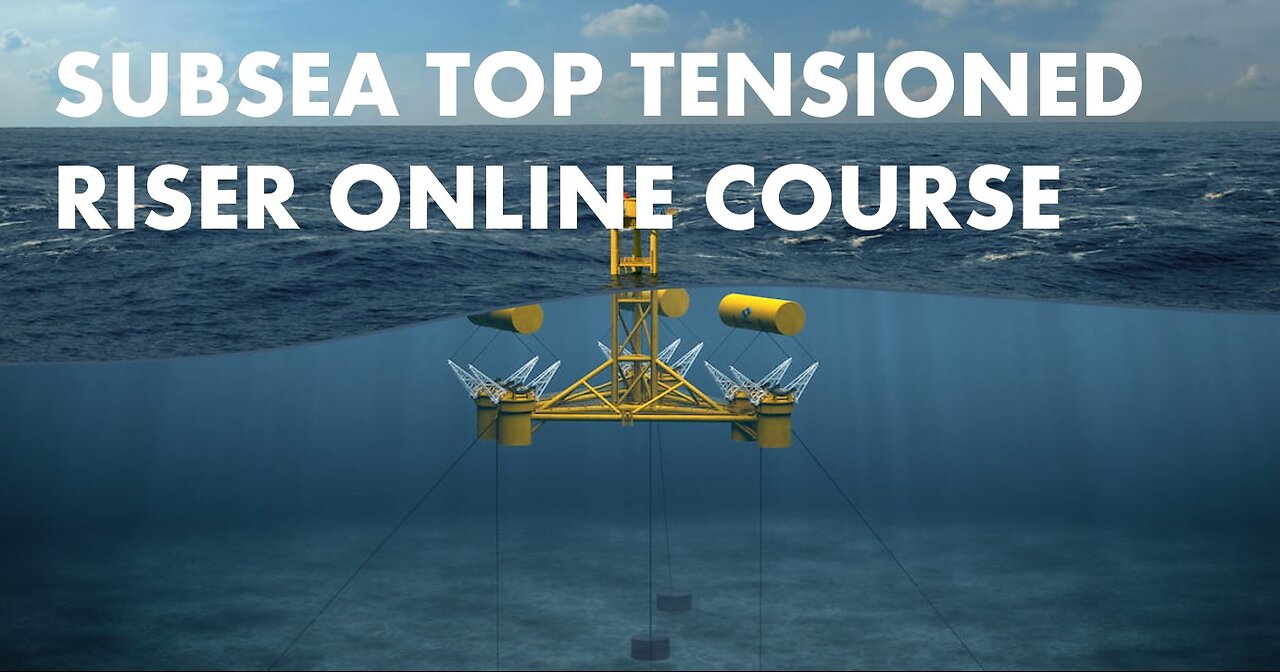Premium Only Content

Subsea Top Tensioned Riser Online Course
TTRs are long circular cylinders used to link the seabed to a floating platform. These risers are subject to steady currents with varying intensities and oscillatory wave flows. The risers are provided with tensioners at the top to maintain the angles at the top and bottom under the environmental loading. The tension requirements for production risers are generally lower than those for drilling risers. The risers often appear in a group arranged in a rectangular or circular array.
TTRs rely on a top tensioner in excess of their apparent weight for stability. TTRs are commonly used on a tension leg platform or spar dry tree production platform (spar). At the surface, the riser is supported from the platform by hydropneumatic tensioners, which allow the riser to move axially or stroke, relative to the platform. TTRs were designed for shallow-water use, but as the water depths grew, so did the need for new designs.
In shallow water it has been practice using top tensioned risers, but as design for larger water depth is accounted the need for new design practice has increased. The ordinary Top Tensioned riser is very sensitive to the heave movements due to wave and current loads because the rotation at the top and bottom connections is limited. The heave movement also requires top tension equipment to compensate for the lack of tension. If the top tension is reduced it will cause larger bending moment along the riser especially if the riser is located an environment with strong current. If the effective tension becomes negative (i.e. compression) then Euler buckling will occur.
For full videos you can visit this link :
https://drive.google.com/file/d/1nZQOEUNlX1kUR09H-eXPAbAF1qBsx-jG/view?usp=sharing
and you will be directed to a google drive link where you can download all files of this course
https://drive.google.com/file/d/1_17wEvPc26LgC-I3Zjidc8WXqXt_ouKZ/view?usp=sharing
-
 LIVE
LIVE
LFA TV
13 hours agoLFA TV LIVE STREAM - WEDNESDAY 5/28/25
19,735 watching -
 56:00
56:00
The Dr. Ardis Show
1 hour agoThe Dr. Ardis Show | The Anemia Deception w/ Morley Robbins | Episode 05.28.2025
-
 4:04:18
4:04:18
The Bubba Army
1 day agoTrump Pardons The Chrisleys? - Bubba the Love Sponge® Show | 5/28/25
79.6K13 -
 1:29:11
1:29:11
Game On!
18 hours ago $2.48 earnedI'M BACK! (hopefully) We Have A LOT to Catch Up On!
13.9K -
 2:04:36
2:04:36
BEK TV
1 day agoTrent Loos in the Morning 5/28/2025
34.4K -
 1:08:19
1:08:19
Coin Stories with Natalie Brunell
22 hours agoPeter Schiff on Why Gold Will Replace Dollar, Coming Bond Market Chaos and Bitcoin vs. Gold
247K46 -
 1:41:29
1:41:29
The Illusion of Consensus
11 hours ago $24.73 earnedPart One of HEATED DEBATE: 24-year-old Rav Arora vs Mark Cuban on DEI in Corporate America
127K38 -
 2:46:55
2:46:55
TimcastIRL
14 hours agoDemocrats Launch DESPERATE MILLION Dollar Bid To Find "Liberal Joe Rogan" Project SAM | Timcast IRL
316K138 -
 2:51:42
2:51:42
Laura Loomer
13 hours agoEP123: Trump Admin Puts Harvard In Their Crosshairs
86.4K28 -
 6:29:41
6:29:41
MyronGainesX
1 day ago $44.21 earnedCharlie Kirk vs 400 Cambridge Students And Andrew Wilson vs Feminist
138K28